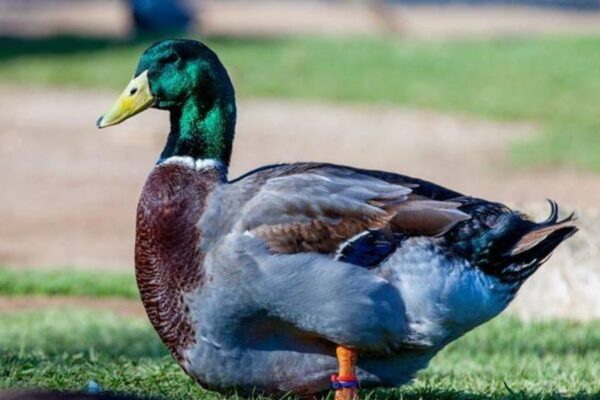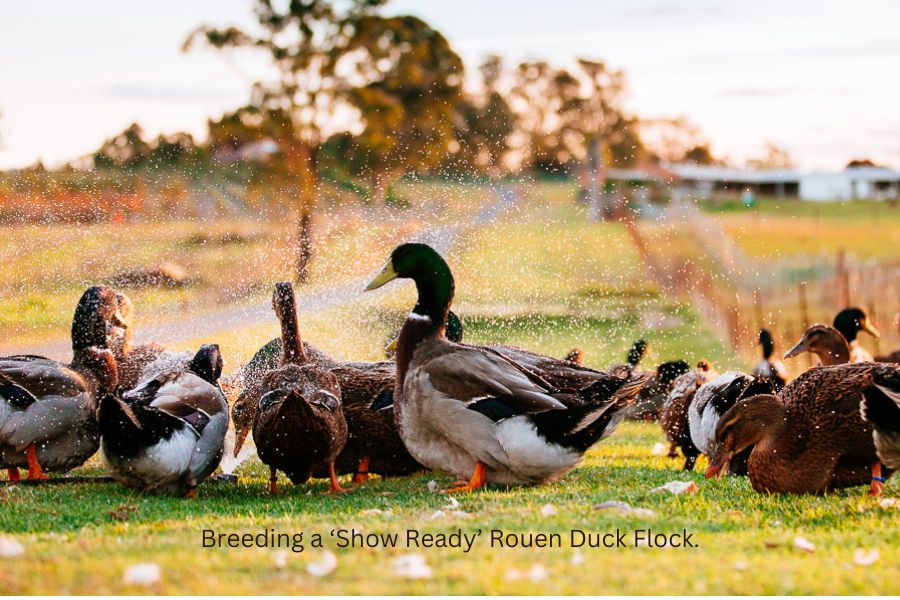Geese
Breeding a ‘Show Ready’ Rouen Duck Flock.
Raising High-Quality Rouen Ducks for Shows
Producing a “Show-Ready Team” of Rouen Ducks, or any avian species for that matter, presents a formidable challenge. It demands dedication and determination. Achieving excellence in Rouen Ducks is a gradual process with no quick fixes; it may take several years to attain the desired standards. While purchasing “Show Ready” Rouen Ducks annually for showcasing may yield temporary rewards, I caution against this approach in the long term. Without proper knowledge and expertise, the striking show birds procured six months ago may gradually lose their charm, shedding weight and color over time.
Conduct thorough groundwork, begin modestly, and expand your flock alongside gaining experience. This discussion pertains to individuals who already possess a solid grasp of feeding, accommodation, environment, and are now at the stage of refining their flock. It cannot be emphasized enough that all waterfowl must be housed in an environment abundant in fresh air, clean water, and high-quality nourishment.
1. Establishing a Strong Foundation
The ultimate objective is to maintain an assembly of exemplary males and females. A robust flock always starts with healthy females, which naturally attracts good males (with some exceptions).
Increase your flock size annually, eliminating ducks and drakes with physical imperfections such as faulty wings or misaligned toes each year. Ducks lacking physical soundness should be promptly removed to prevent future issues.
2. Evaluating Your Flock
The goal is to consolidate all essential attributes in a single bird, focusing on aspects like color, web lacing, and wing patterns. Group the birds into categories based on the quality of these characteristics, selecting the best ducks that meet the criteria. Subsequently, assemble groups of ducks that complement each other. For instance:
– Robust ducks with sturdy bone structure interspersed with well-laced ducks.
– Long-bodied ducks paired with those showcasing strength in the head and neck regions.
These are illustrative examples, and you should prioritize the traits that are most important for your flock. Not all top-quality Rouen Ducks produce ideal offspring. Pairing ducks and drakes with complementary strengths is an efficient method to cultivate a formidable show team.
Through trial and error, I’ve discovered that mating within heavier breeds yields optimal fertility. While individual mating can be effective, it often leads to reduced fertility, resulting in wastage of valuable time according to my experience. As a guideline, I recommend group categorization once your flock reaches a count of 25 to 50 or more. Larger numbers enhance the success rate of this process. Once you are satisfied with your flock’s standard, you can work with smaller numbers effectively.

3. Organizing Your Rouens
After the juvenile birds from your breeding season mature and exhibit their final colors, categorize them into three groups. Removing ducks with defects early on is crucial for the future health of your flock, as physical flaws do not rectify themselves.
Your primary group should consist of top-tier individuals suitable for breeding or exhibition purposes. They should embody as many key features as possible and represent the cream of the crop.
Your secondary group forms a reservoir of potential resources. These ducks may lack in certain aspects but possess distinctive strengths like lacing or coloration, which could be advantageous for the future development of your flock. This group plays a vital role in enhancing your primary flock’s genetic diversity. Over the years, your ducklings may exhibit varying traits, requiring the presence of birds with dominant characteristics to maintain the flock’s equilibrium.
4. Repeating the Process
Follow these steps annually, refining your flock to become a prominent contender in show competitions.
Building a substantial population of your finest Rouen Ducks may take a couple of years, necessitating the utilization of your ‘spare parts’ group to establish a solid foundation. Prioritize quality over quantity as you enhance your flock further, and always eliminate defective birds promptly. Failing to do so may lead to future complications, resulting in potential losses that could have been avoided.
Breeding top-tier ‘Show Ready’ Rouen Ducks is a multi-year endeavor, requiring a long-term commitment of 5 to 10 years to establish a superior-quality flock. Ensure your dedication is unwavering throughout this journey.
N.B. These reflections and opinions are based on personal experiences. It’s advisable to seek advice from your local veterinarian regarding any medical concerns or issues with your flock. With over six decades of waterfowl breeding experience, I’ve encountered numerous challenges in flock development and garnered valuable lessons along the way. I hope my insights can assist in nurturing flock quality for bird enthusiasts in the years to come. There’s no greater joy than witnessing a flock of meticulously bred and nurtured birds flourishing in their environment.

